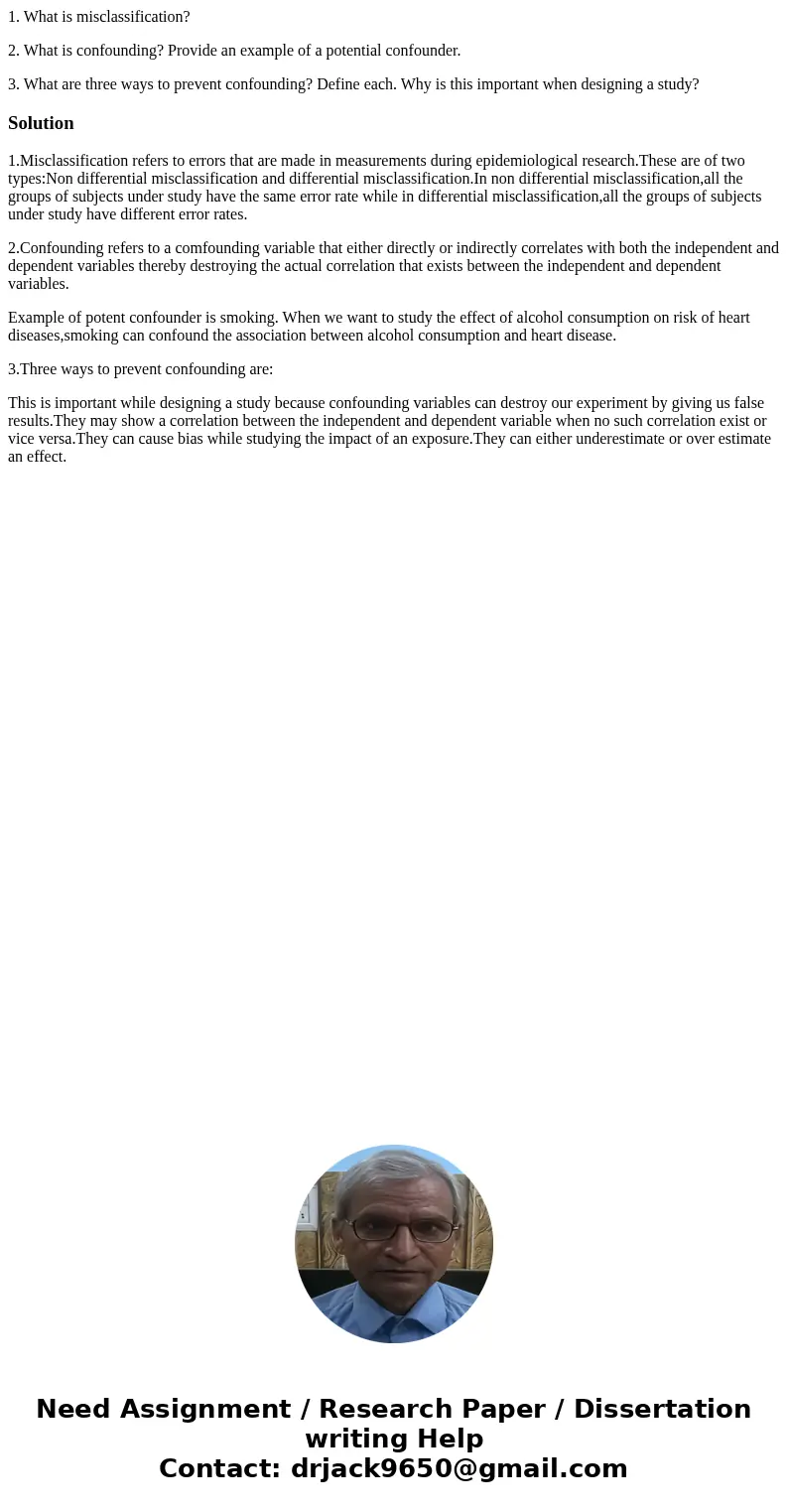1 What is misclassification 2 What is confounding Provide an
1. What is misclassification?
2. What is confounding? Provide an example of a potential confounder.
3. What are three ways to prevent confounding? Define each. Why is this important when designing a study?
Solution
1.Misclassification refers to errors that are made in measurements during epidemiological research.These are of two types:Non differential misclassification and differential misclassification.In non differential misclassification,all the groups of subjects under study have the same error rate while in differential misclassification,all the groups of subjects under study have different error rates.
2.Confounding refers to a comfounding variable that either directly or indirectly correlates with both the independent and dependent variables thereby destroying the actual correlation that exists between the independent and dependent variables.
Example of potent confounder is smoking. When we want to study the effect of alcohol consumption on risk of heart diseases,smoking can confound the association between alcohol consumption and heart disease.
3.Three ways to prevent confounding are:
This is important while designing a study because confounding variables can destroy our experiment by giving us false results.They may show a correlation between the independent and dependent variable when no such correlation exist or vice versa.They can cause bias while studying the impact of an exposure.They can either underestimate or over estimate an effect.

 Homework Sourse
Homework Sourse